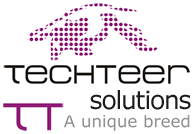Computerized reasoning (artificial intelligence) is taking huge steps in the field of clinical diagnostics, upgrading precision and proficiency in illness recognition. This change is especially obvious in radiology, pathology, and genomics.
How about we investigate how man-made intelligence is changing these regions with functional models and use cases.
Improving Symptomatic Exactness in Radiology
Radiology has seen significant enhancements through simulated intelligence joining. Artificial intelligence calculations can investigate clinical pictures, like X-beams, X-rays, and CT checks, with amazing accuracy.
For example, simulated intelligence frameworks can distinguish early indications of cellular breakdown in the lungs in CT filters, which may be missed by the natural eye.
Model:
Cellular breakdown in the lungs Recognition: simulated intelligence calculations like Google’s DeepMind have been prepared on tremendous datasets of lung filters. These frameworks can distinguish beginning phase cellular breakdown in the lungs knobs with a higher precision than customary techniques, possibly saving lives through early mediation .
Headways in Pathology
Pathology includes the assessment of tissues and cells to analyze illnesses. Man-made intelligence apparatuses help pathologists by distinguishing examples and peculiarities in tissue tests that are demonstrative of conditions like malignant growth.
Use Case:
Bosom Malignant growth Conclusion: artificial intelligence controlled stages like PathAI have shown their capacity to work on the exactness of bosom disease analyze. By examining digitized pathology slides, these frameworks can pinpoint destructive cells and give definite reports, supporting pathologists in making more exact determinations .
Leap forwards in Genomics
In genomics, computer based intelligence deciphers complex hereditary information, prompting better comprehension and analysis of hereditary problems. AI models can filter through huge measures of hereditary data to distinguish transformations related with infections.
Model:
Intriguing Hereditary Issues:
computer based intelligence stages like DeepGenomics utilize progressed calculations to anticipate the effect of hereditary varieties. This has demonstrated priceless in diagnosing uncommon hereditary problems, offering bits of knowledge that were beforehand challenging to acquire .
Correlation:
computer based intelligence Indicative Instruments versus Conventional Strategies
Computer based intelligence analytic instruments give a few benefits over conventional techniques:
Speed:
simulated intelligence can process and break down information quicker than human specialists, prompting faster determination.
Consistency:
artificial intelligence calculations keep up with predictable execution, lessening the gamble of human blunder.
Versatility:
artificial intelligence frameworks can deal with enormous volumes of information, making them appropriate for boundless screening programs.
In spite of these benefits, tending to potential drawbacks is significant. Man-made intelligence frameworks depend vigorously on the nature of the information they are prepared on. One-sided or fragmented information can prompt off base conclusions, which carries us to the moral contemplations.
Moral Contemplations and Expected Inclinations
The combination of computer based intelligence in diagnostics brings up moral issues, especially in regards to information protection, algorithmic straightforwardness, and predisposition. Guaranteeing that computer based intelligence frameworks are prepared on assorted datasets is essential to keep away from inclinations that could influence indicative results.
Model:
Predisposition in Information:
A review uncovered that computer based intelligence frameworks prepared prevalently on information from explicit populaces probably won’t proceed too on information from different gatherings. This features the requirement for comprehensive datasets that address a large number of socioeconomics .



